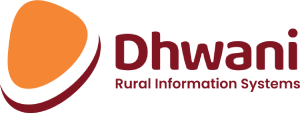The two most common approaches to app development have been to purchase ready-made apps from a third-party vendor or to build and customise them from the ground up with skilled developers and coders. We are now witnessing a rapid rise and advancement of technologies of low-code/no-code development alternatives that provide users throughout the organisation with the power of developing applications.
A low-code or no-code development platform enables people to build software applications without coding or with very little coding; a popular alternative to traditional software development for people with little technical expertise who intend to create full-fledged applications.
What role does low-code play in social sector organizations?
Social Sector Organizations very often work on limited funding but as technology become a necessity in itself more and more organisations want to integrate app/web-based solutions into their program. With the very limited budgets, it is not just the cost of hiring specialized engineers that can impact an organization, but also the costs of maintenance and future upgrades of the systems. Hence tech for non-profits needs to be both affordable and user-friendly as well.
What makes no-code so revolutionary for organizations in the social sector?
- Firstly, In case an organisation lacks the resources to hire a software developer or outsource to a development house, no-code platforms put innovation into the hands of every employee. Most no-code platforms provide a user interface designer that enables users to assemble pre-configured components to build a blog or software quickly.
- Simplifying your development process allows you to utilize your developers better across the stack, decreasing the time it takes to build and the number of staff needed to do it. Fewer people and less time mean less cost.
- Social Sector organisations often need solutions in less time as they have to address problems continuously; hence, no-code can be a time-efficient solution.
Where can the social sector can use these:

- Back office: which includes HRMS, websites, payroll systems, emailers, campaigns, etc.
- MEAL: that is creating systems for Monitoring, Evaluation, and Accountability Learning.
- Donor/Grant Management: this would include document management, compliance management, etc.
- Outreach: this would include outreach through Chatbots, IVR, SMS, etc.
Popular No-code platforms to begin your journey with:
- Building Website: Super, TypeDream
- Build Mobile Applications: AppSheet, Glide
- Chatbots: Glific, Tidio
- Build Forms for Survey: mForm, TypeForm
At Dhwani we are trying to make technology more accessible to social sector organizations. Dhwani’s MForm is a no-code platform where social sector organizations can create forms to collect data on the field. From farmer’s data management to managing hygiene behaviour data to tracking the progress of Self Help Groups. Using MForm makes program planning and monitoring more accessible on the ground level by leveraging technology.




